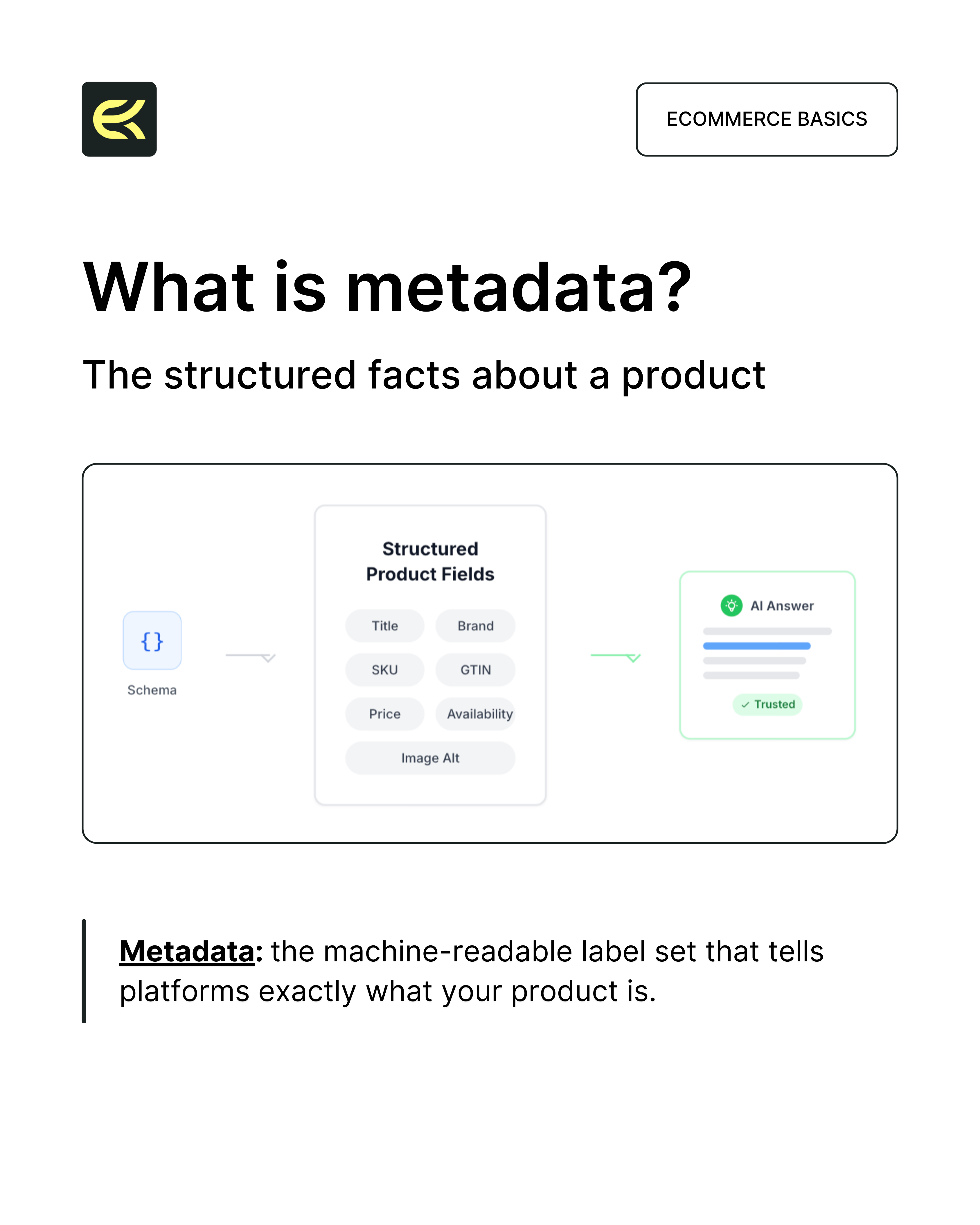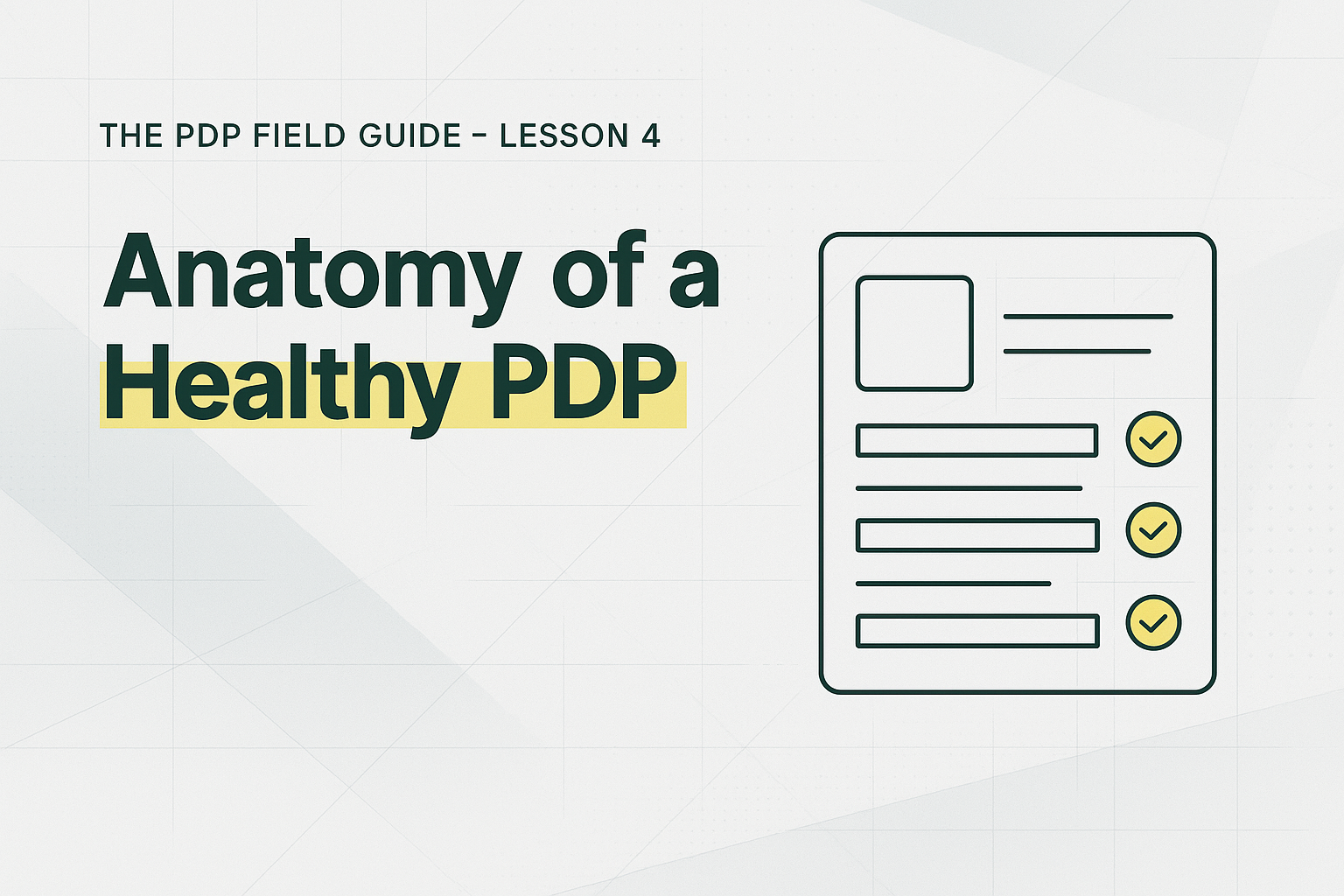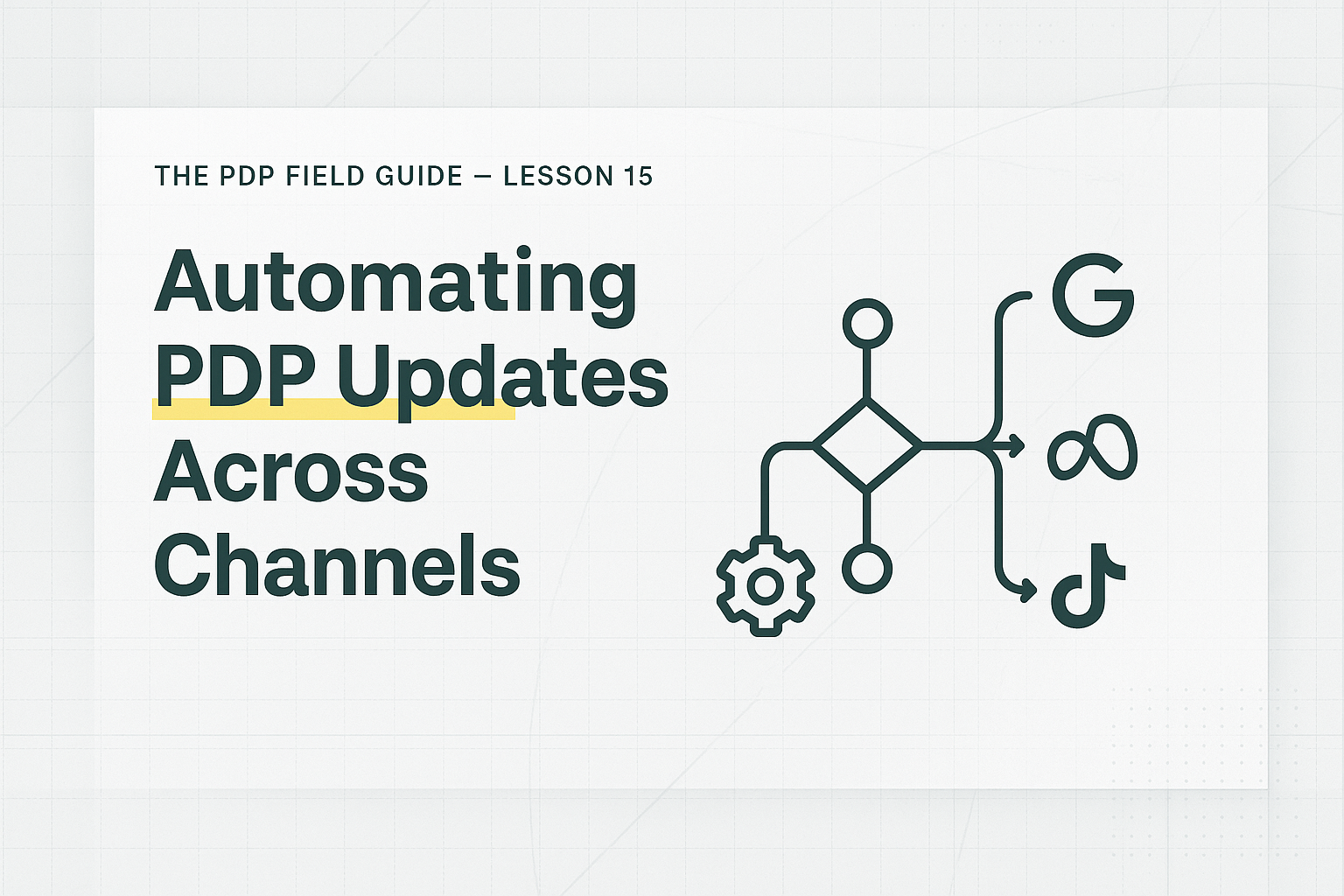.png)

Metadata: the Structured Facts About a Product

⚡️ TL;DR Metadata = machine-readable labels
What Is Metadata?
Metadata is the machine-readable label set that tells platforms exactly what your product is. It isn’t marketing prose. It’s the structured fields systems can parse, validate, and trust: title, brand, SKU, GTIN, price, availability, images and their Alt Text, category, and more. On a Product Detail Page, these facts live as explicit keys that machines can evaluate without guessing.
Primer on Alt Text: Alt Text
PDP overview: Product Detail Page
Why It Matters
Every discovery surface—Google, marketplaces, social shops, and AI answers—decides inclusion from fields, not copy. Clean metadata lets platforms match a query to your product, validate required fields, and decide to feature it. Missing or conflicting fields push you to the margins—or out entirely.
Google’s guidance on Product structured data: Google Structured Data
What Counts as Metadata (The Three Buckets)
- Identity & Classification: title, brand, SKU, GTIN, category, and Breadcrumb Schema
- Offer & Status: price, currency, sale price, availability, condition, shipping
- Media & Attributes: images, Alt Text, video, color, size, material, dimensions
Rule of thumb: if a field helps a machine identify, classify, or price the product, it’s metadata.
Where It Lives
- Your PIM (or ERP) is the system of record for core fields: Product Information Management
- Your PDP HTML exposes those fields with JSON-LD so crawlers and LLMs can read them: JSON-LD
- Product feeds (CSV or XML) mirror the same facts for Google Merchant, Meta, and TikTok Shop
- Image files carry descriptive Alt Text
- All of it should map to one consistent Source of Truth
When sources disagree—for example, feed price does not match PDP price—platforms choose safety, which usually means exclusion.
How Platforms Use Metadata
- Match: does the record align with the query using fields like title, brand, category, and GTIN
- Validate: do required checks pass—price present, availability valid, GTIN format OK, image present with dimensions
- Include & Rank: if trusted, the product is eligible; stronger structure and completeness improve placement
Fail any check → excluded until it’s fixed.
Common Gaps We See
- Missing or invalid GTINs; reused SKUs across variants
- Price mismatches between feed and PDP (see Price Sync) and broader Feed Drift
- Stale availability. Sale price without currency
- Weak images and missing Alt Text
- Category/breadcrumb drift that breaks relevance signals
- Titles written like ads instead of identifiers
Quick Wins to Start Now
- Lock a single source of truth so the PIM owns canonical fields and PDP Product Schema and feeds mirror it (Product Schema)
- Validate nightly for required keys (title, brand, GTIN, price, availability) and parity across PDP/feed
- Tighten titles to lead with identity and one or two key attributes; keep brand once
- Harden images and write descriptive Alt Text per variant
- Track breaks continuously so a failed check can’t quietly remove products from results
For a field-by-field walkthrough of healthy structure, start with:
Anatomy of a Healthy PDP
Structured PDP Fields
Bottom Line
Metadata is your inclusion policy. Keep it complete, current, and consistent, and platforms will trust—and feature—your products.


